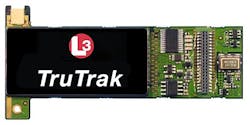Officials of the U.S. Air Force Space and Missile Systems Center at Los Angeles Air Force Base, Calif., awarded an $8.5 million contract modification to L-3 IEC last week as part of the Military GPS User Equipment (MGUE) program.
The contract modification calls for L-3 IEC to help accelerate the MGUE program by providing pre-prototype GPS receiver cards and test capability to enable faster fielding of M-Code capable GPS receivers to the warfighter, Air Force officials say.
L-3 IEC specializes in extremely rugged GPS receiver cards. Some of the company's cards can be installed in GPS-guided artillery shells, bombs, and missiles.
The joint-service MGUE program seeks to develop an updated set of military GPS receivers that provide accurate and reliable positioning, navigation, and timing service where current receiver performance might be compromised or unavailable.
The program seeks to address the increasing threat of enemy electronic warfare jamming of U.S. and allied GPS signals, as well as to deny the enemy the use of U.S. GPS signals. Orbiting GPS IIR-M and IIF satellites are part of the MGUE program, as are GPS III satellites that are in development.
Prototype GPS receiver electronic circuit cards built for the MGUE program are to help add new features into GPS receiver designs. The current maturity of the technology and lower risk levels than expected is enabling Air Force experts to accelerate fielding of several types of MGUE receivers to the U.S. Army, Air Force, Navy, and Marine Corps.
The MGUE also is developing Military Code (M-Code) signals, which are transmitted from modernized GPS satellites. These signals retain all legacy GPS receiver capabilities, yet offers high-power signals with the ability to resist jamming and interference.
M-Code signals also add security features to prevent their use by the enemy, and offer improved message formats and signal modulation for faster and more accurate performance.
The Modernized User Equipment (MUE) program has produced prototype standard-sized military GPS receivers with M-Code and legacy C/A and P(Y) codes. The MGUE program, meanwhile, is developing production-ready GPS receivers for military use.
The Air Force is supervising development of a new, more compact Common GPS Module encompassing the modernized GPS digital application specific integrated circuit (ASIC) technology for use in applications where size, weight, and power (SWaP) need to be minimized.
The Common GPS Module is planned to be the GPS engine for future GPS receivers and other equipment or munitions that require positioning, navigation, and timing capability.
On this contract modification L-3 IEC will do the work in Anaheim, Calif., and should be finished by September 2016.
For more information contact L-3 IEC online at www2.l-3com.com/iec, or the Air Force Space and Missile Systems Center at www.losangeles.af.mil.



